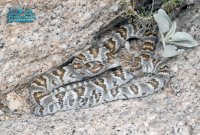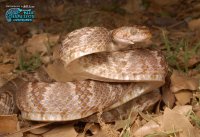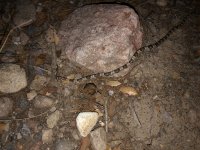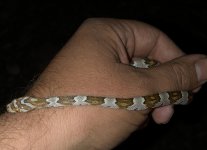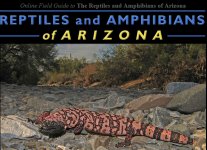| Range: |
 |
| Other Names: |
|
| Description: |
A "cat eyed snake" pupils vertical. Head broad and neck slender. Light
gray to light brown above, with brown blotches on back. Blotches looks
roughly hexagonal in shape and split by a light crossbar. Cream, gray
or pale yellow below with a few brown spots scattered on belly. |
| Similar Species: |
The other lyre sanke found in New Mexico is best distinguished by range. Gopher and Glossy Snakes have round pupils and broad necks. The Gray-banded Kingsnake has round pupils and theanal plate is undivided. Night Snakes have blotches or spots rather than saddles and has an unmarked venter. Other snakes with blotches or saddles have round pupils, or if they have elliptical pupils, have rattles or at least a horny button, on a short stout tail. |
| Venom: |
Rear-fanged, not considered dangerous to humans. Bites to humans reportedly cause mild swelling and irritation. |
| Habitat: |
Chiefly a rock-dwelling snake of lowlands, mesas and lower mountains
slopes. Found in desert grassland, creosote bush desert scrub,
chaparral, pinion-juniper, oak woodland and thornscrub. |
| Behavior: |
Nocturnal. A good climber and constrictor. May be found on roads at night. |
| Hibernation: |
It hibernates during the cold months of late fall and winter. |
| Reproduction: |
A clutch of up to 20 eggs is laid in late summer. The Sonoran Lyresnake apparently hybridizes with the Chihuahuan Lyresnake (Trimorphodon vilkinsonii) in extreme southeastern Arizona and southwestern New Mexico. |
| Diet: |
Eats lizards, lizards eggs, small snakes, and mammals (including bats). |
Authored by: Garth Teitjen

